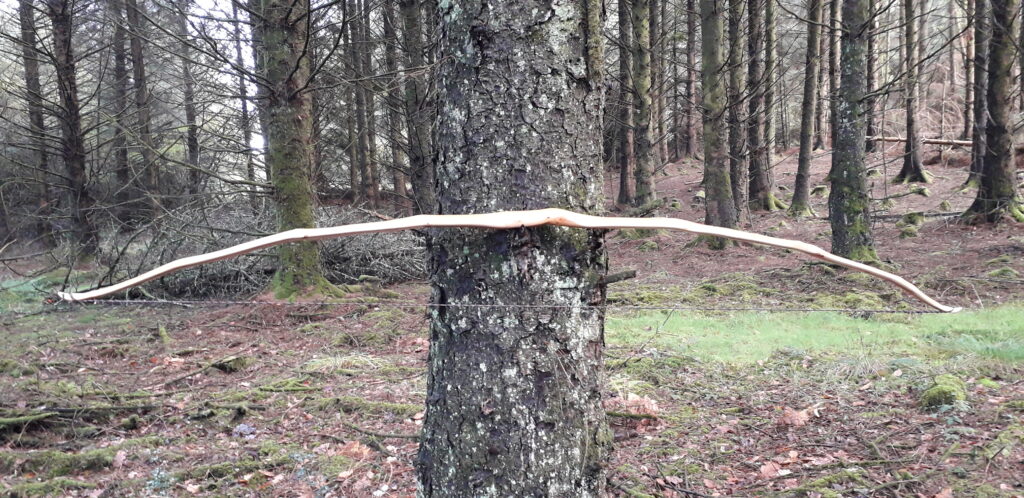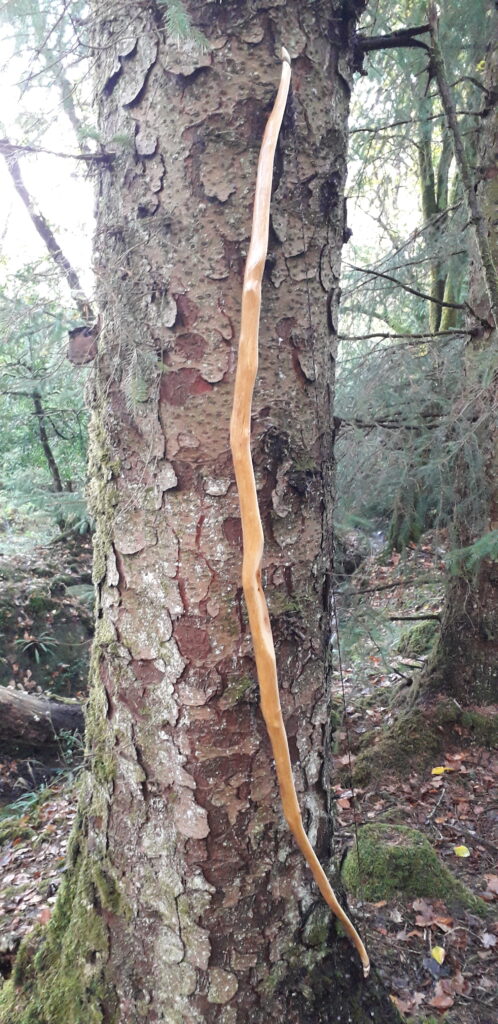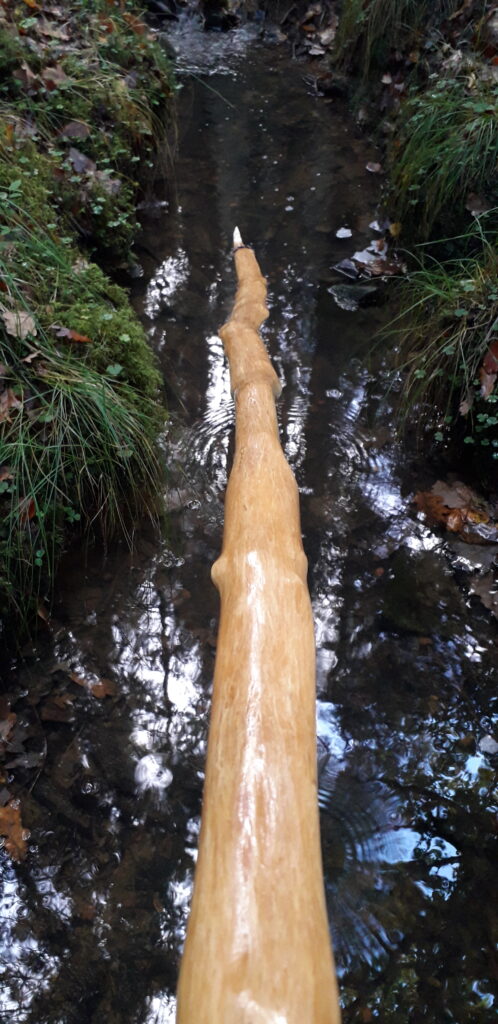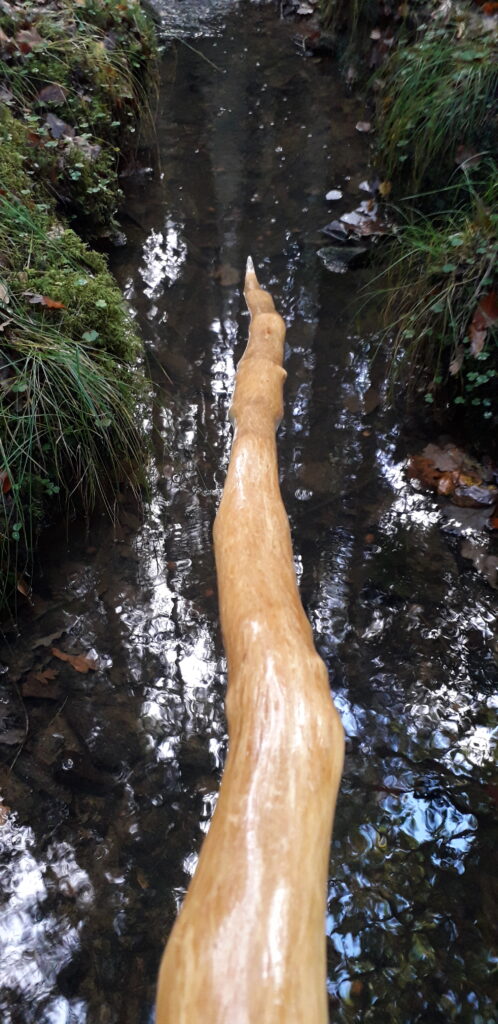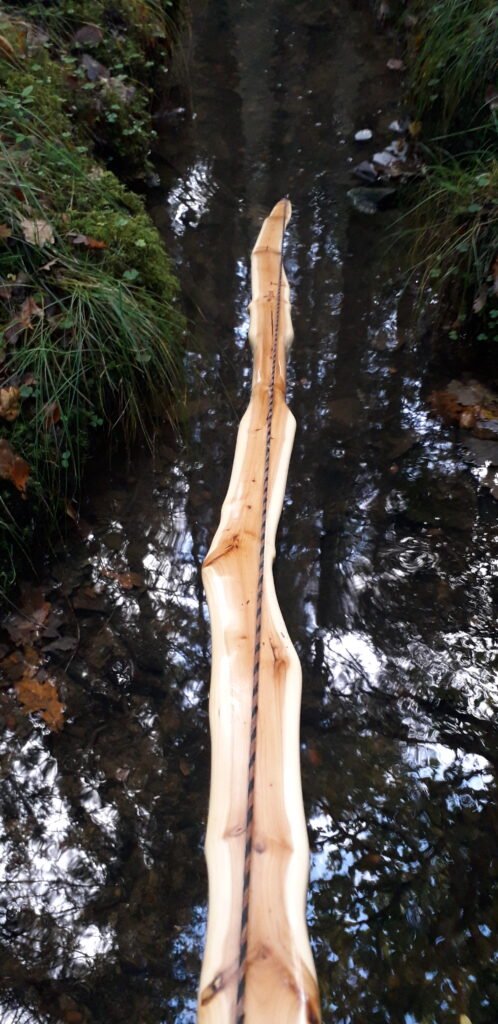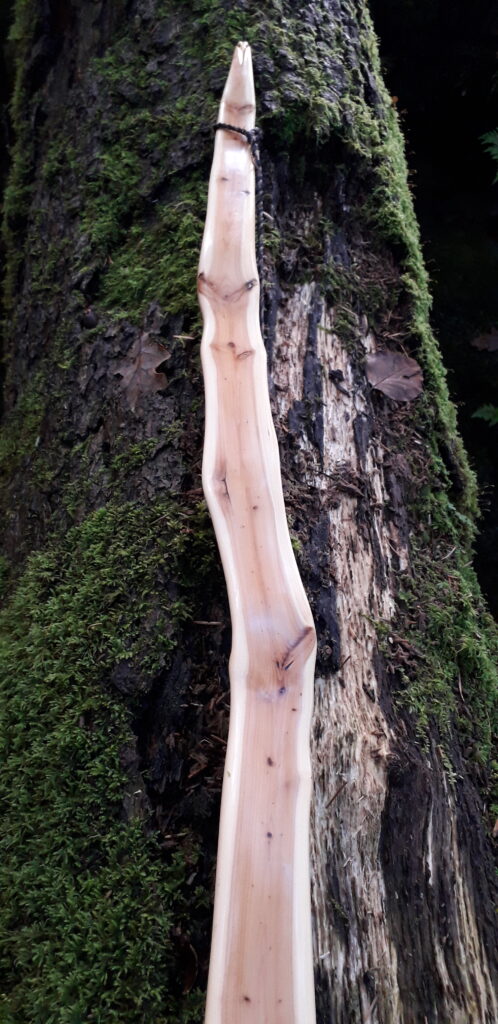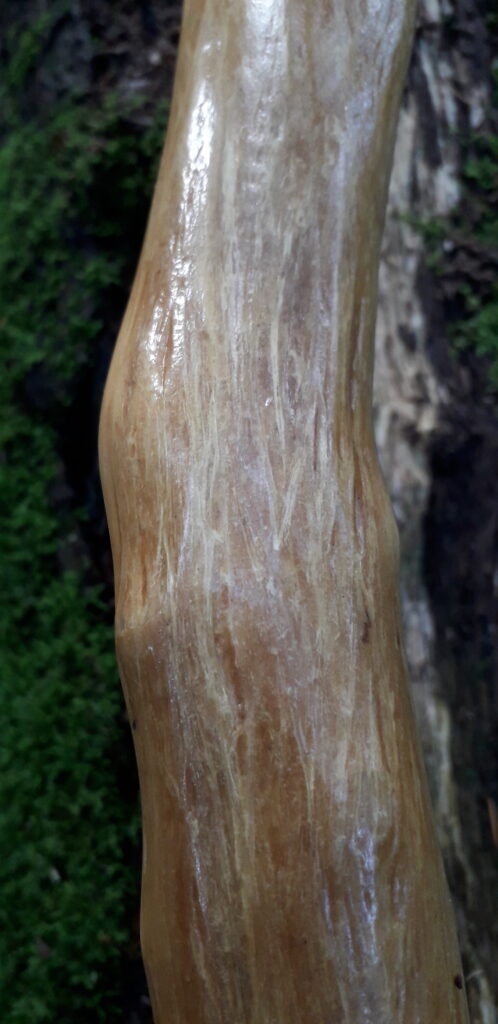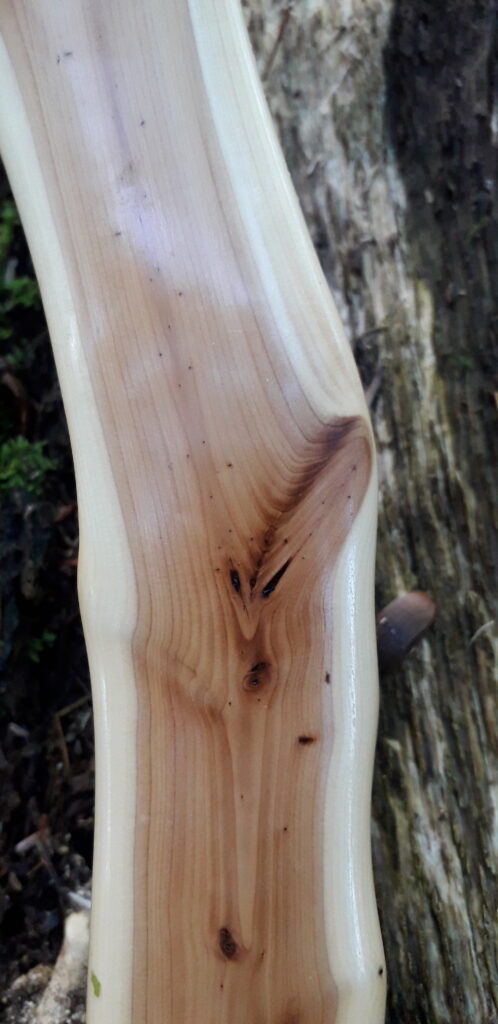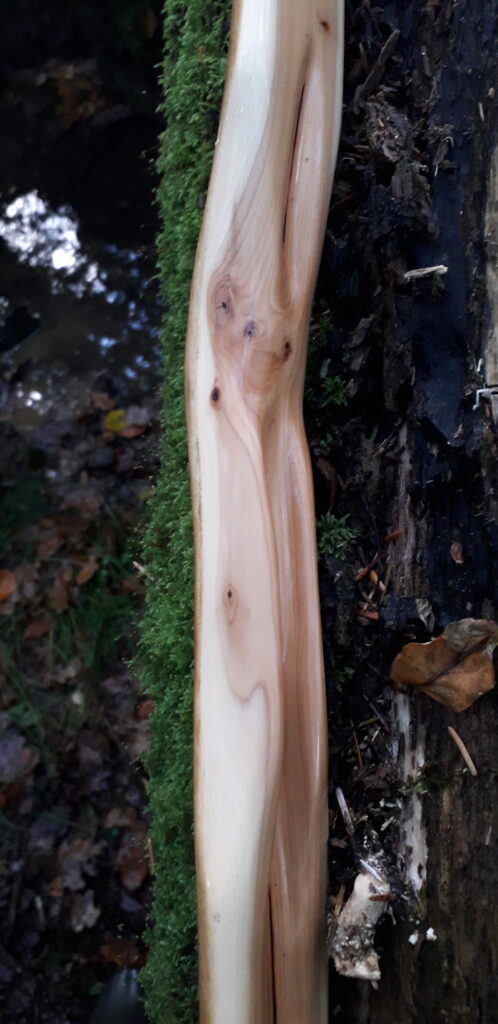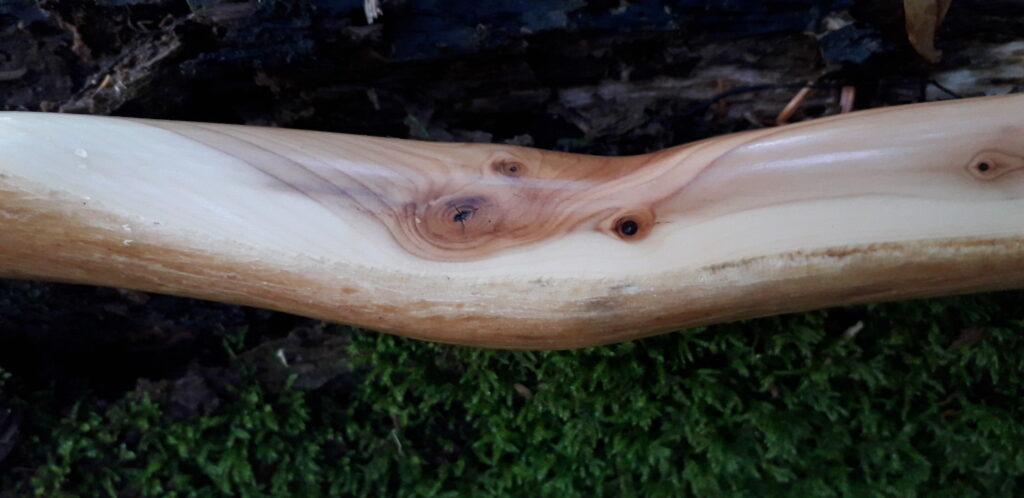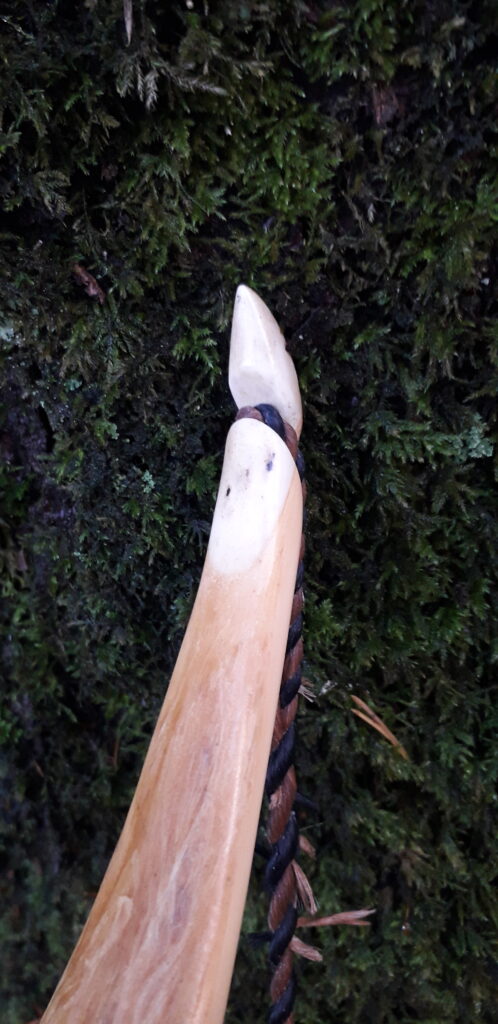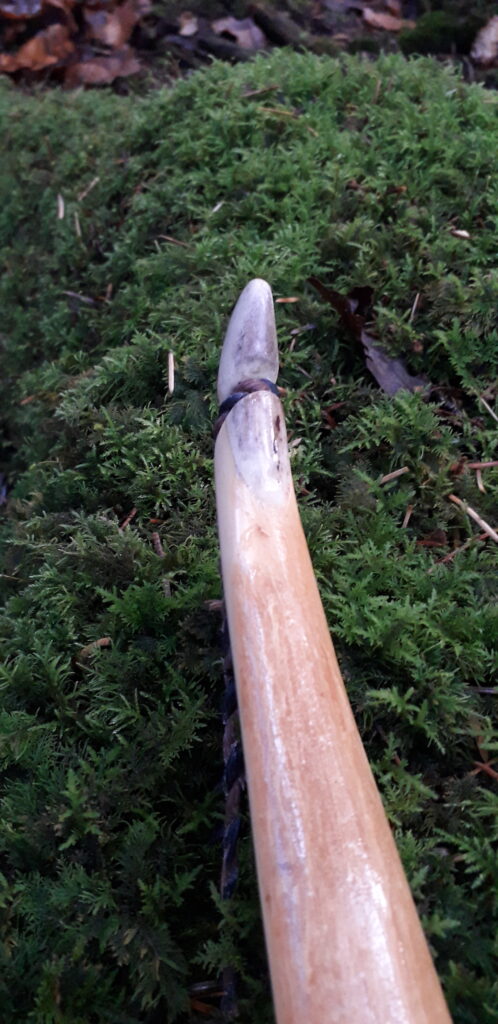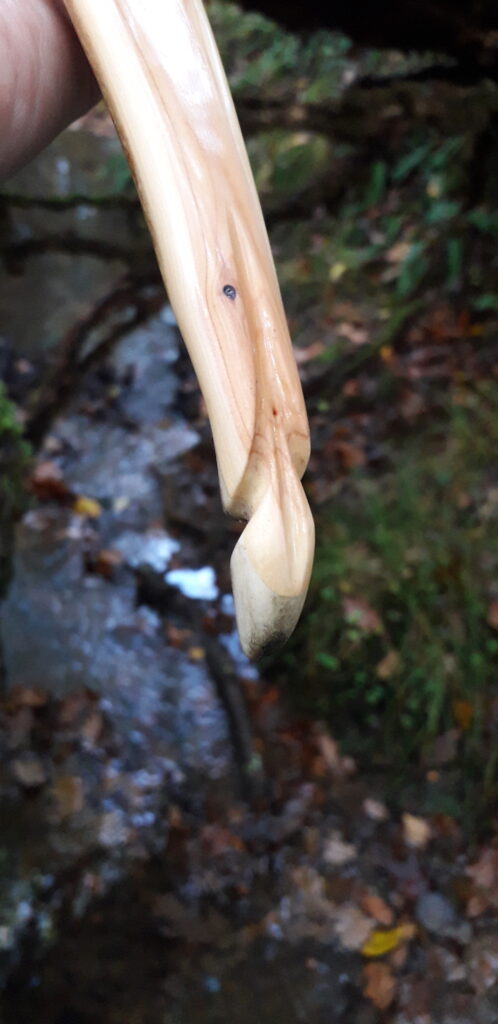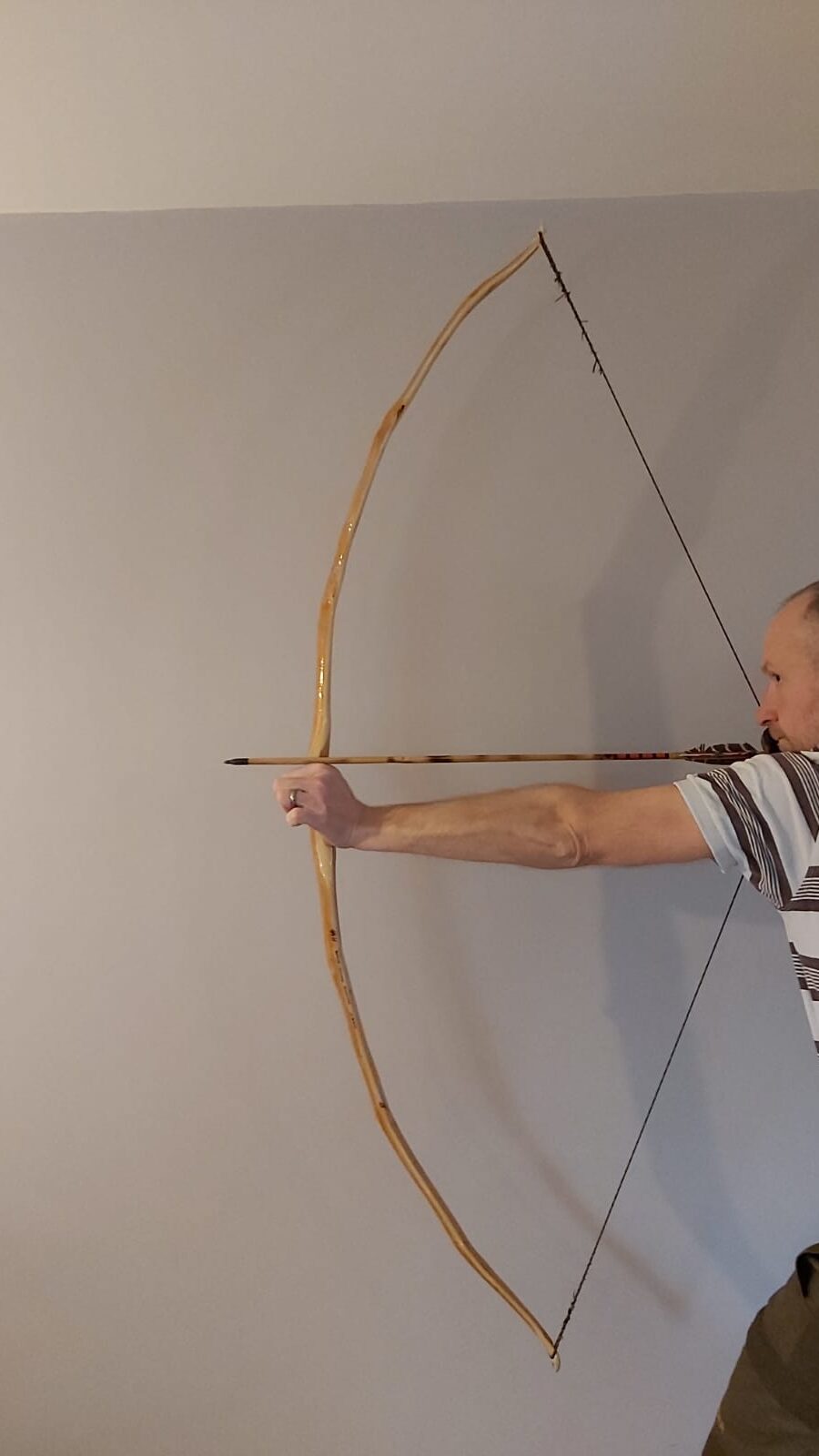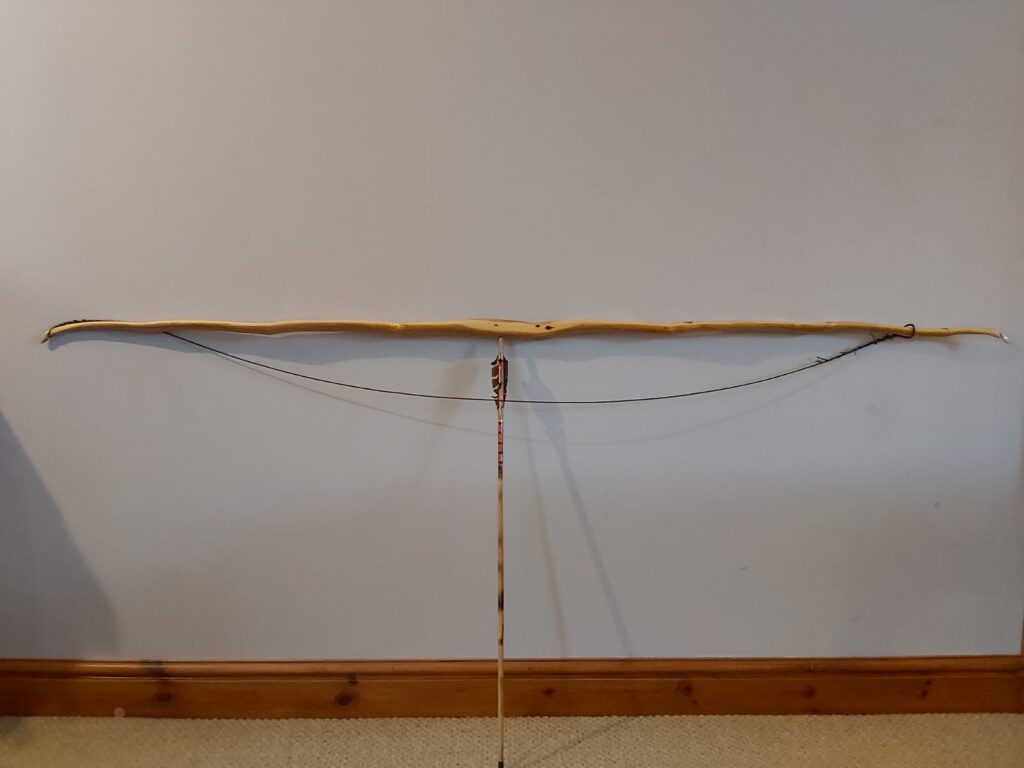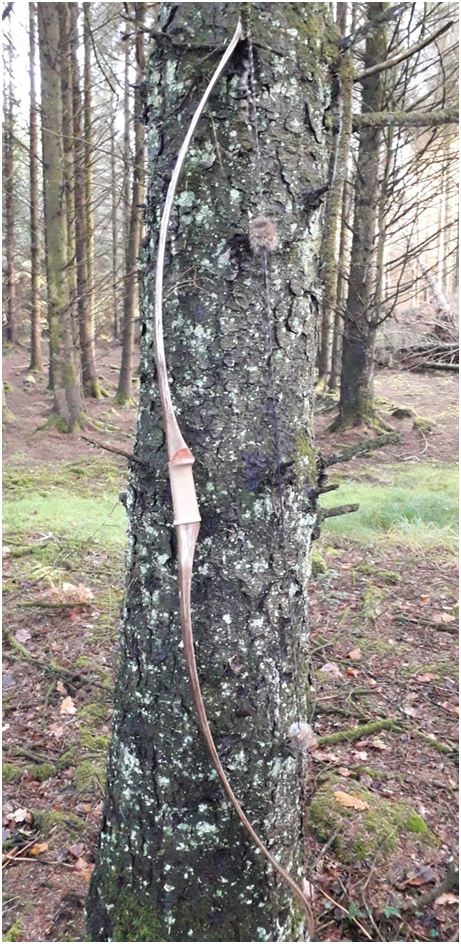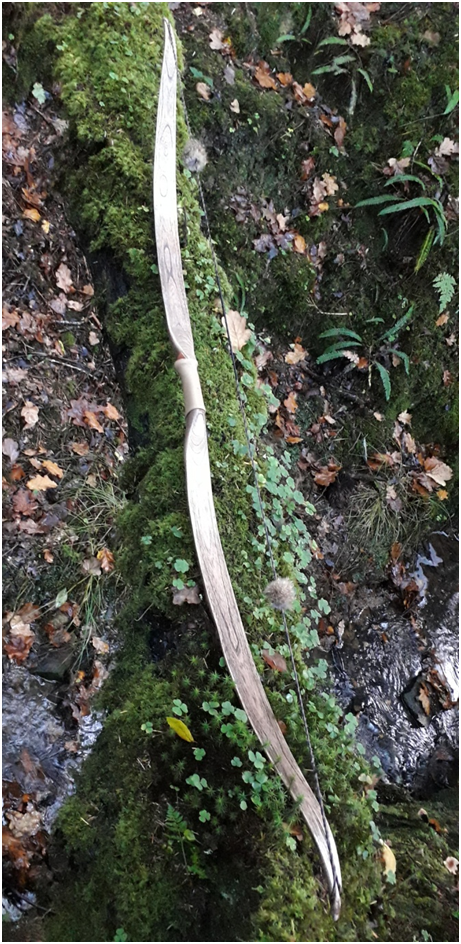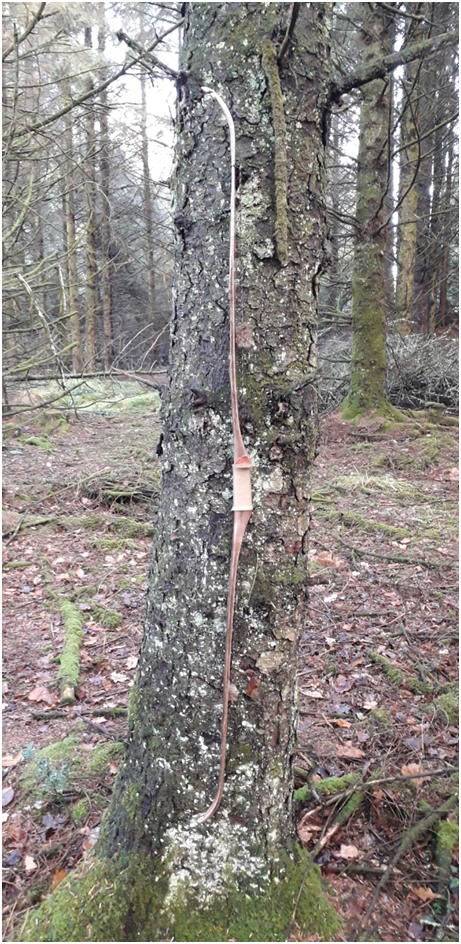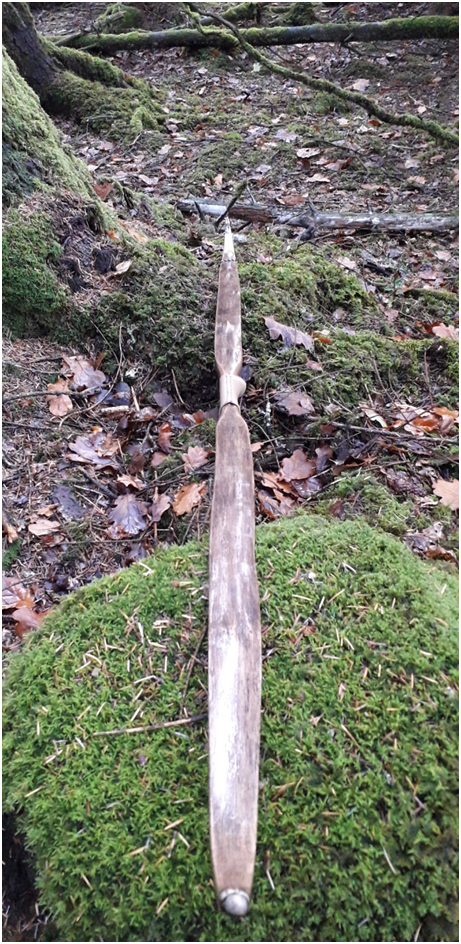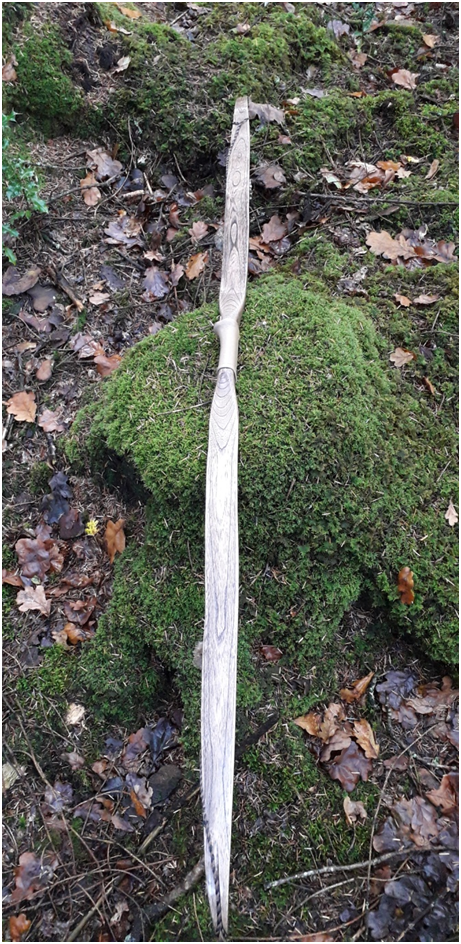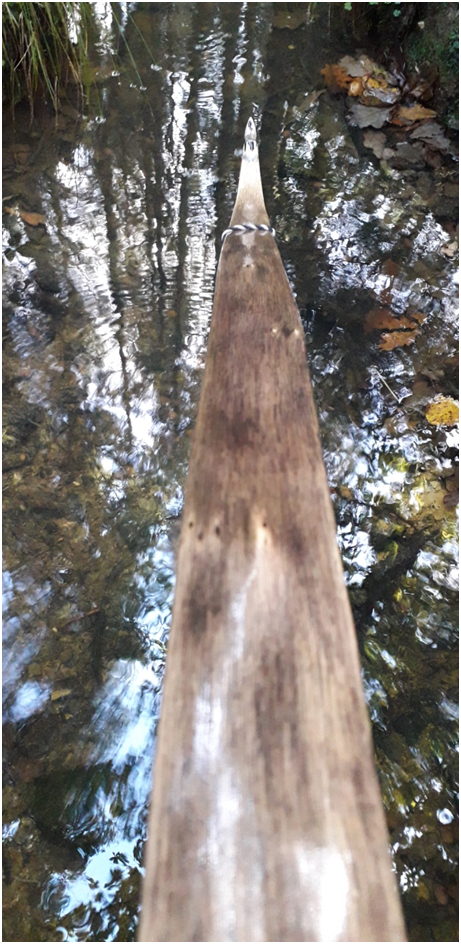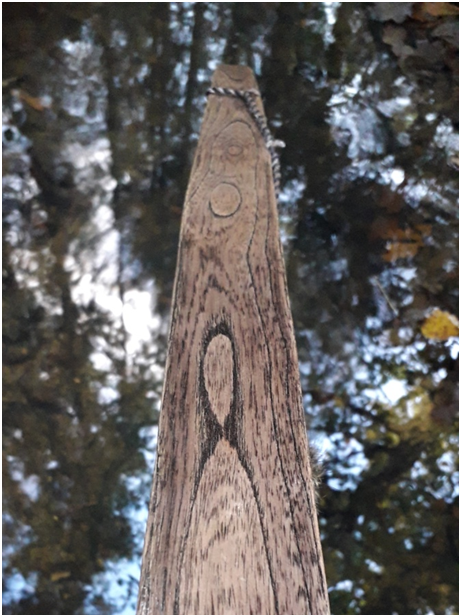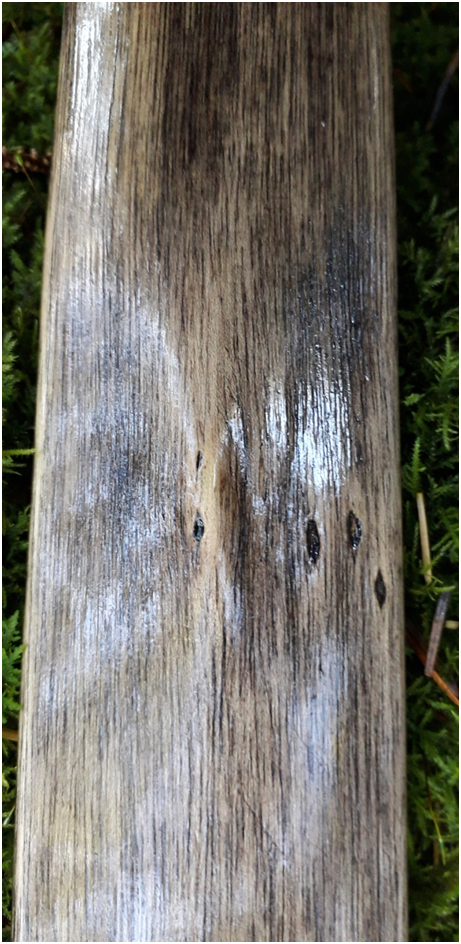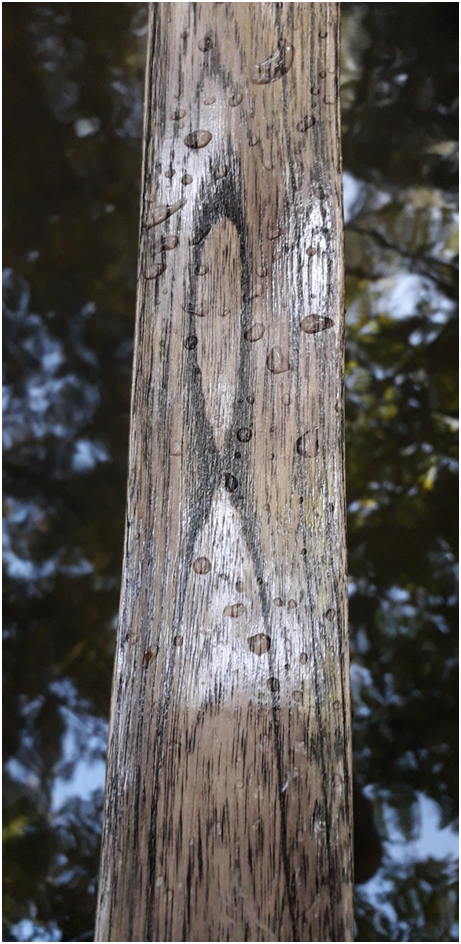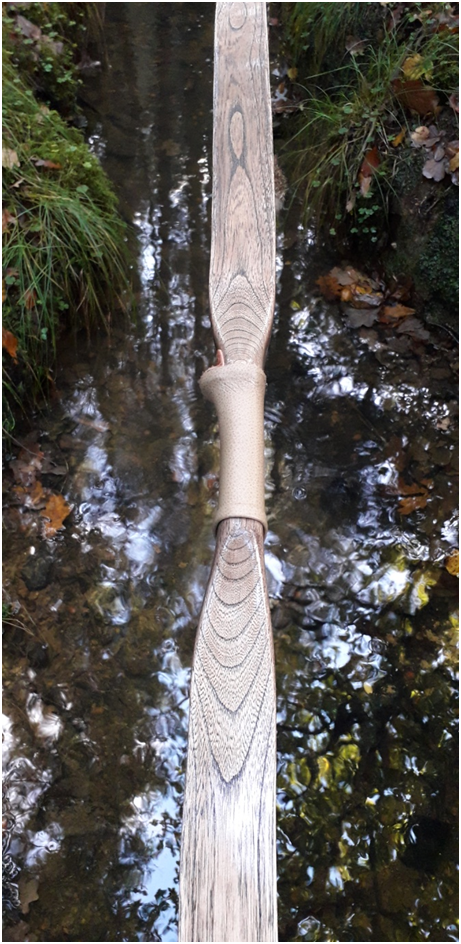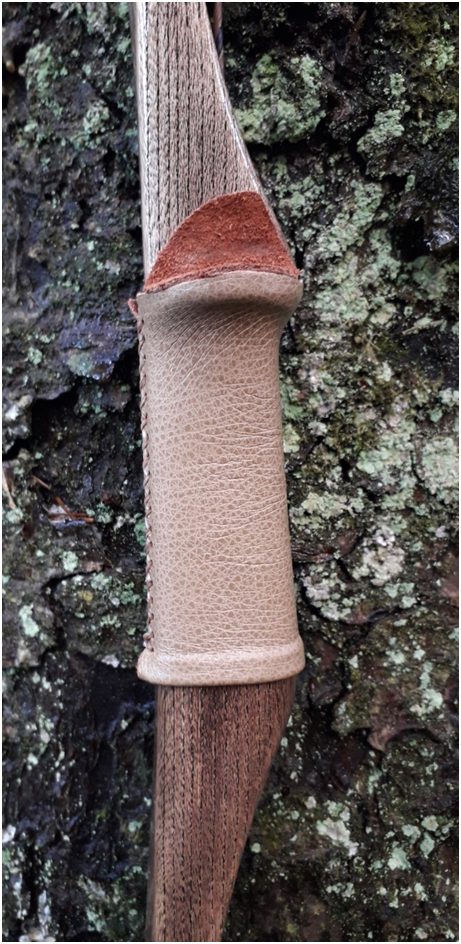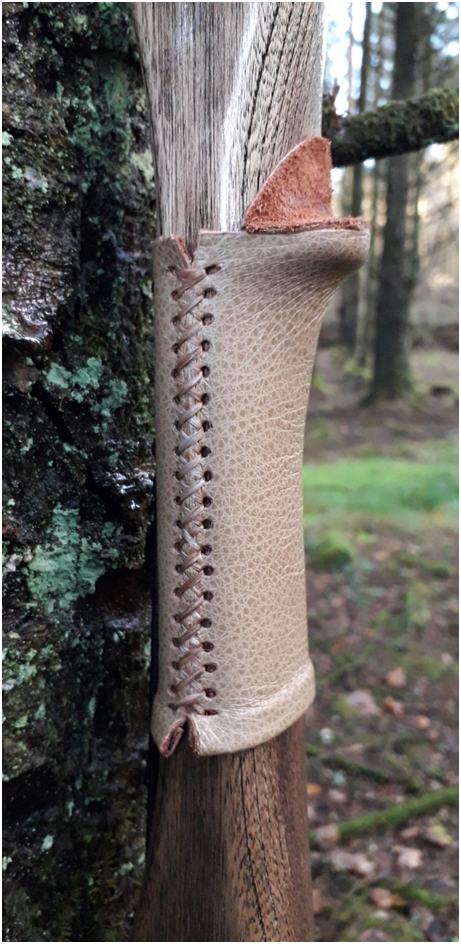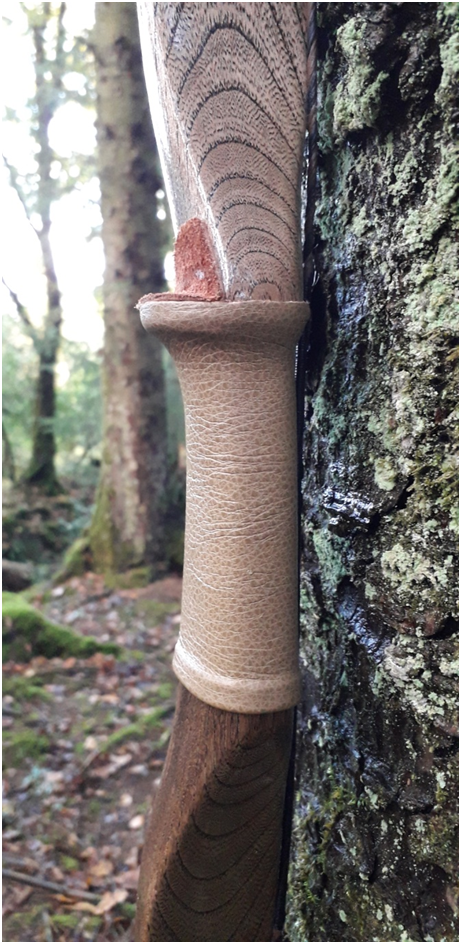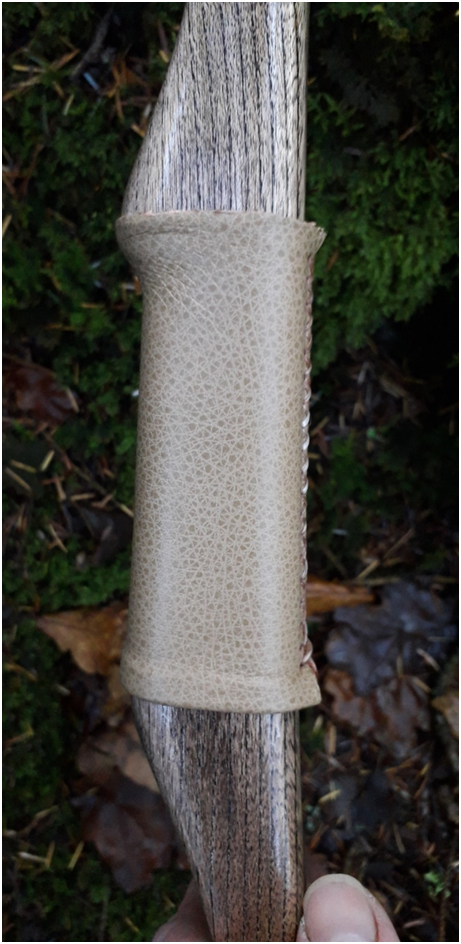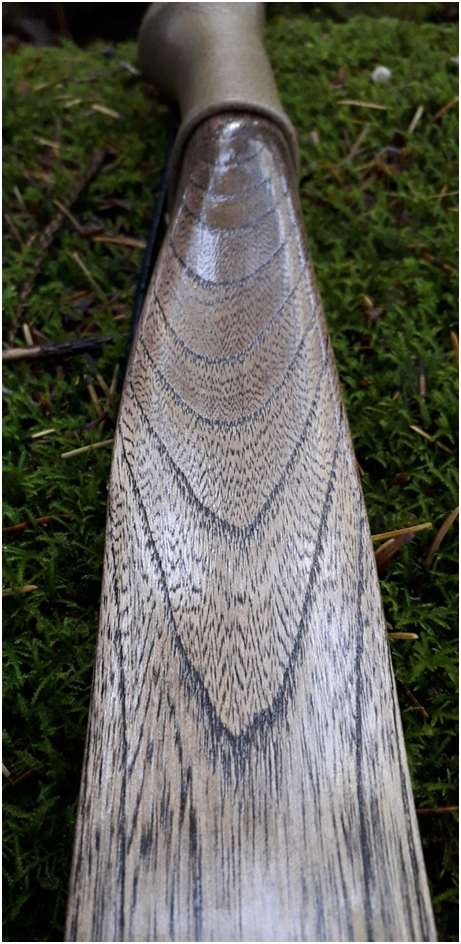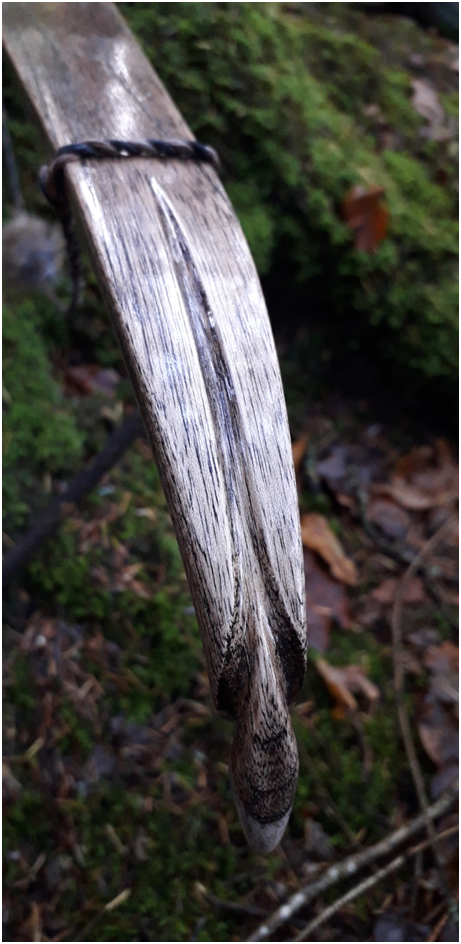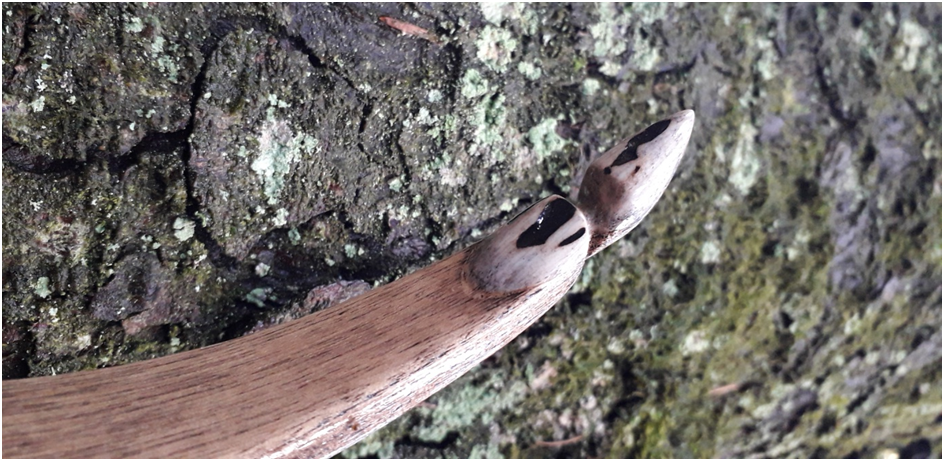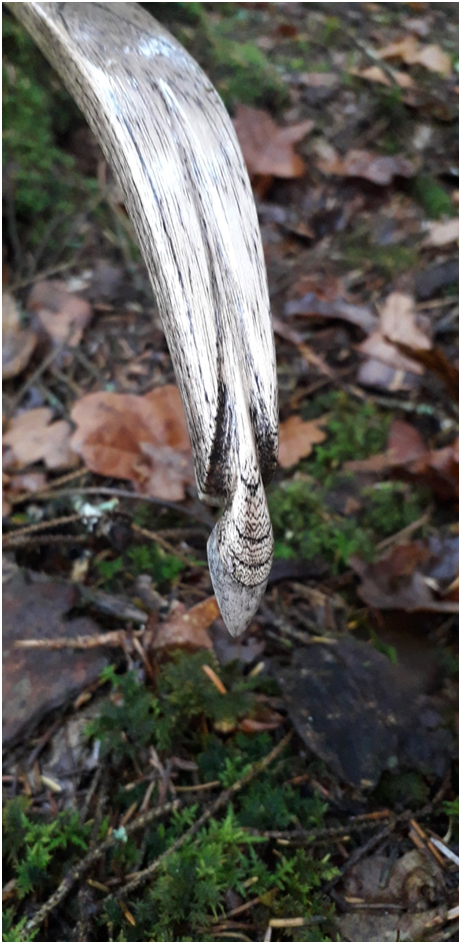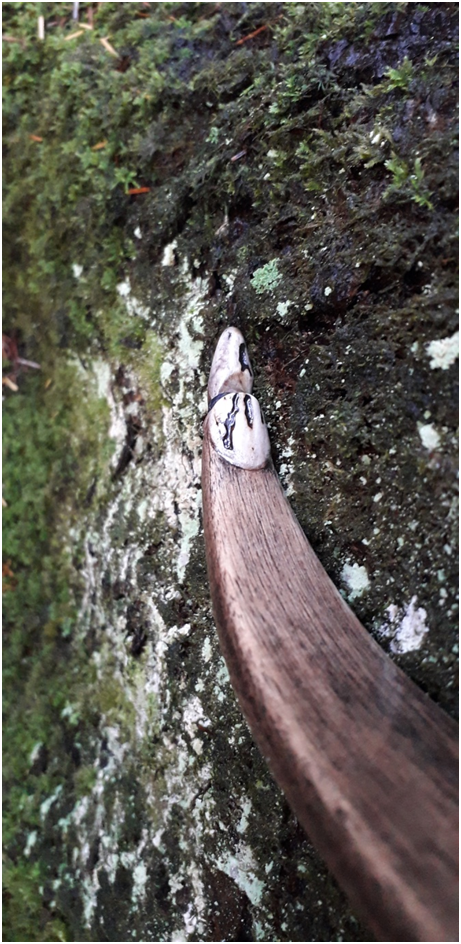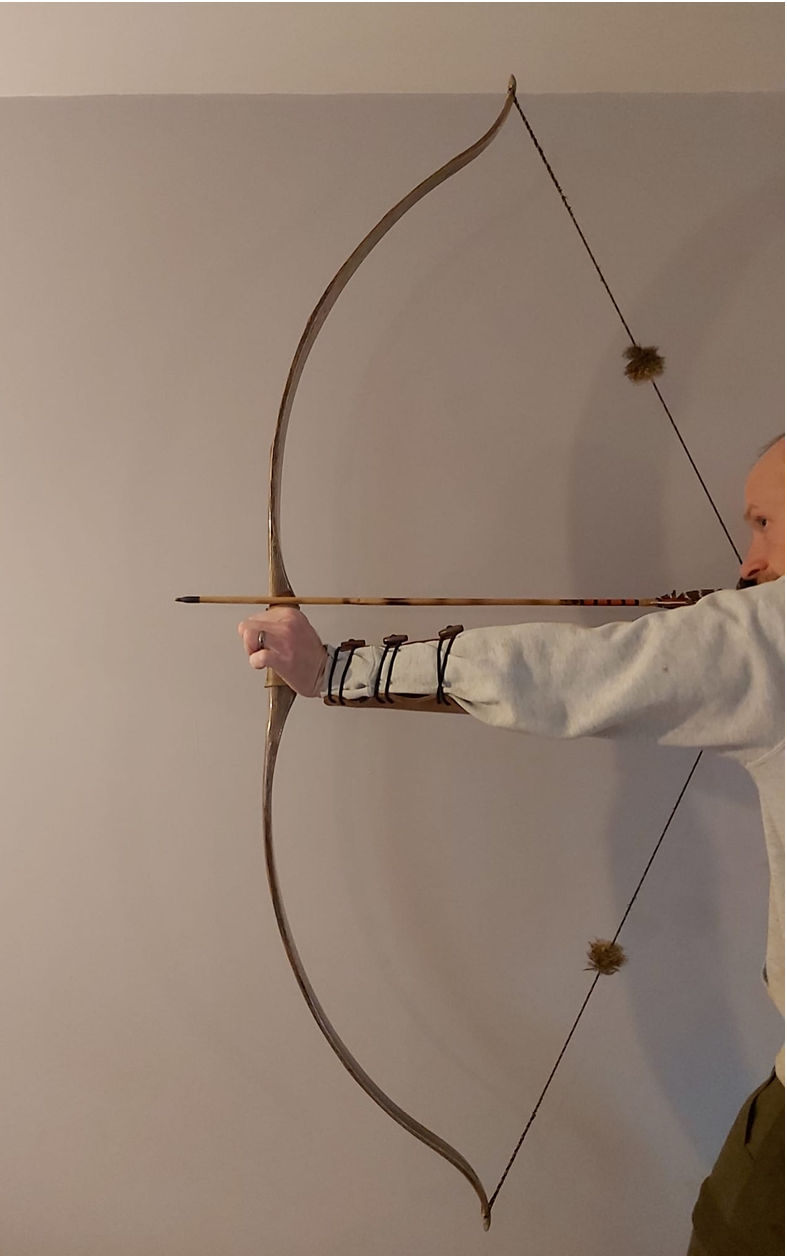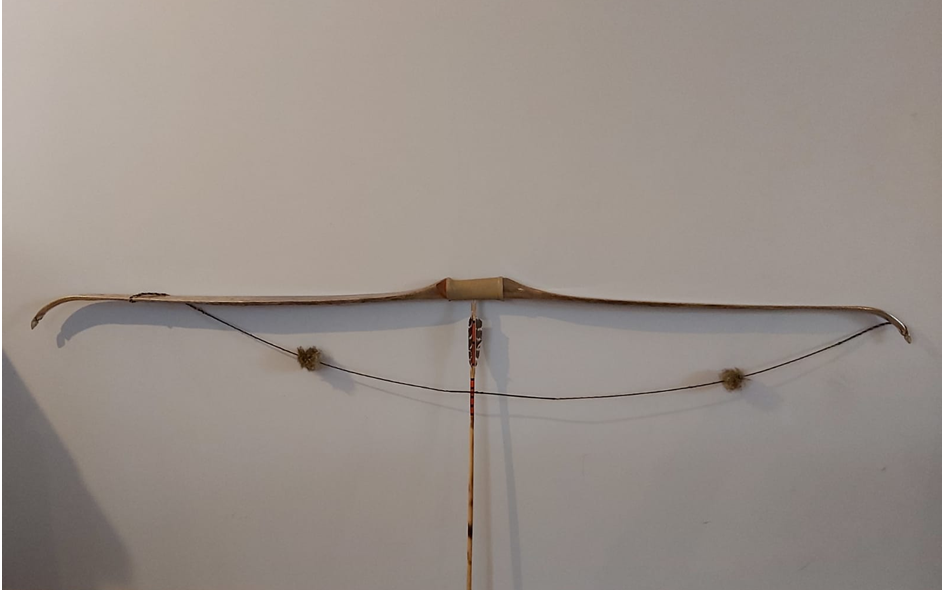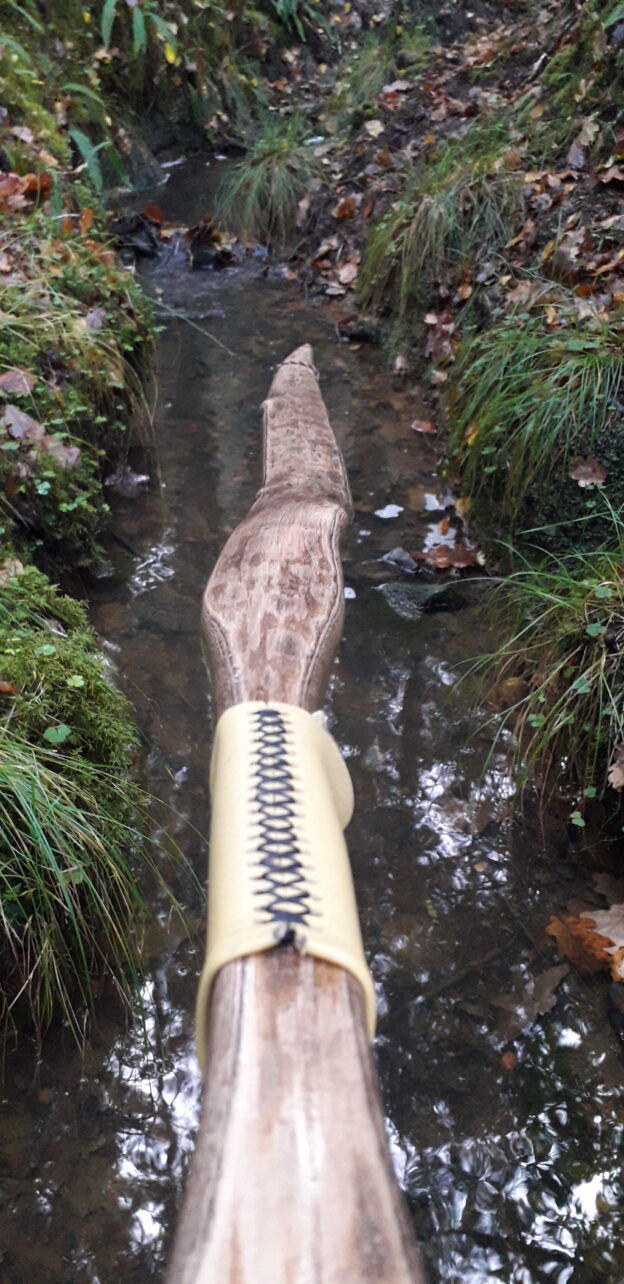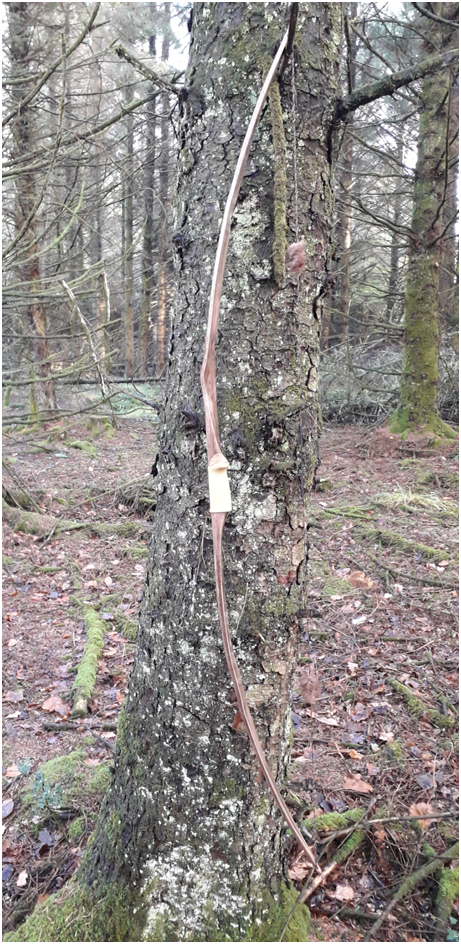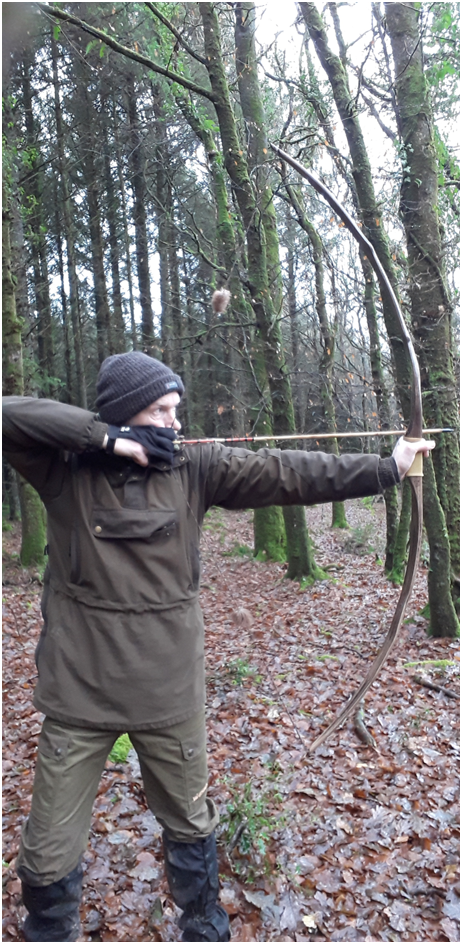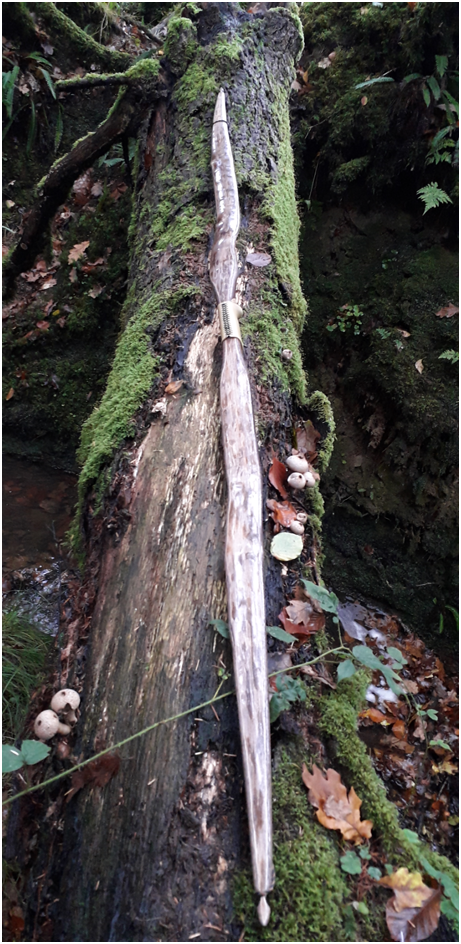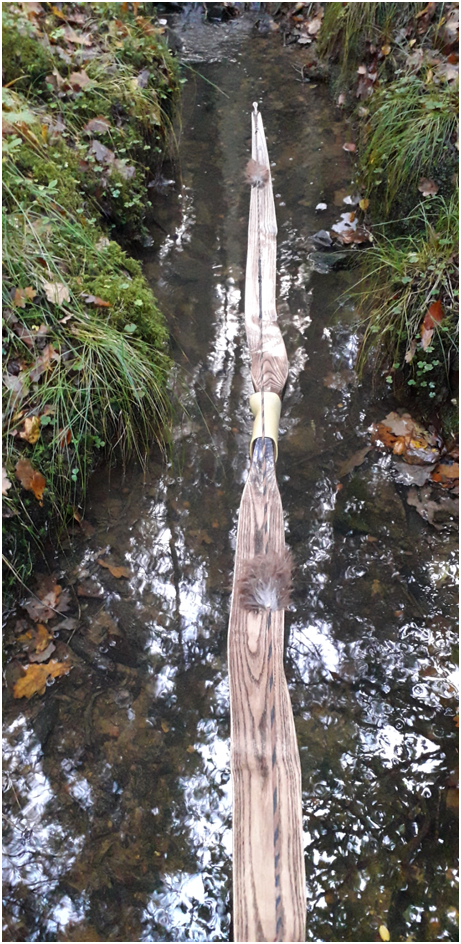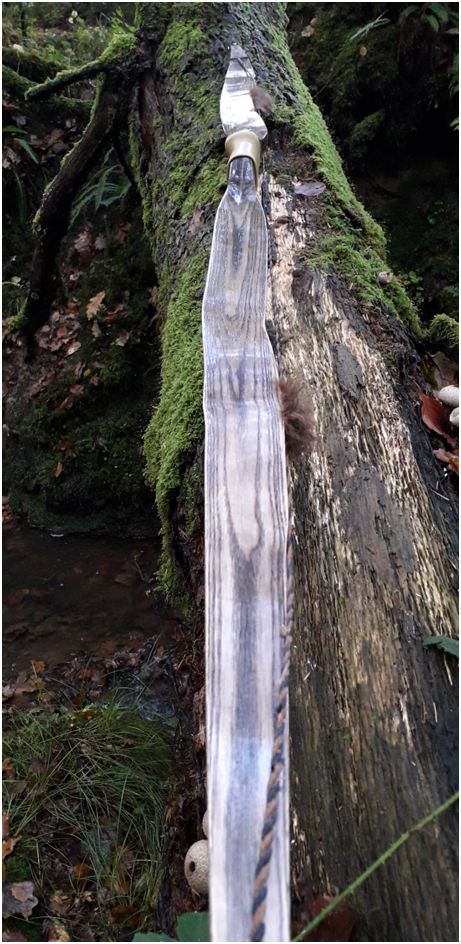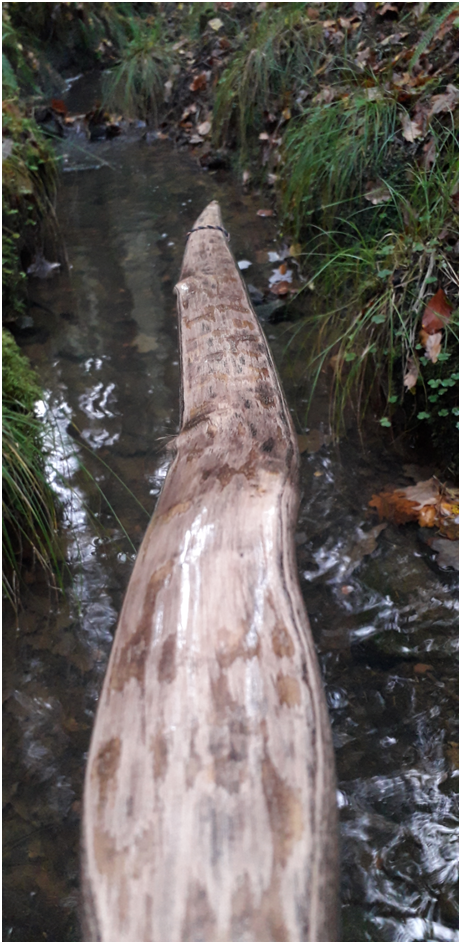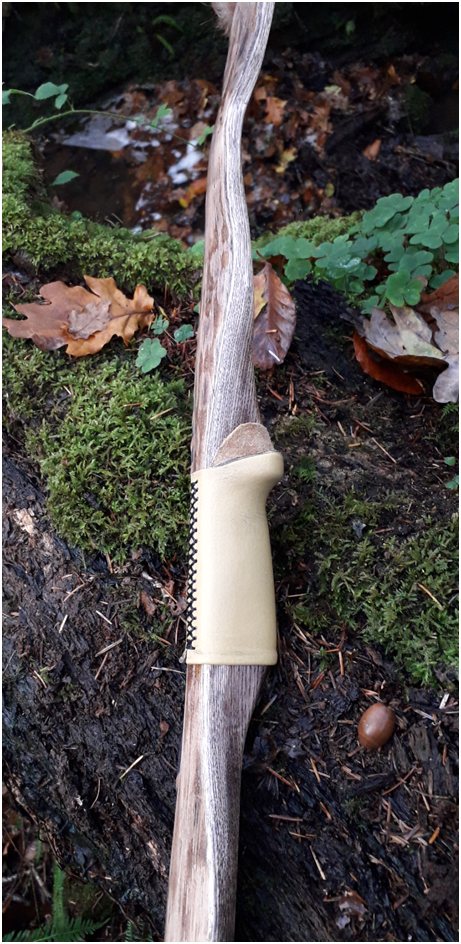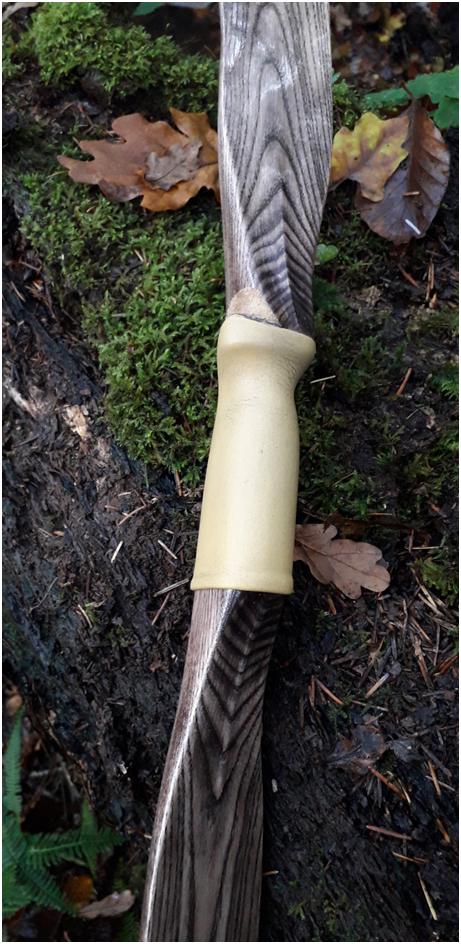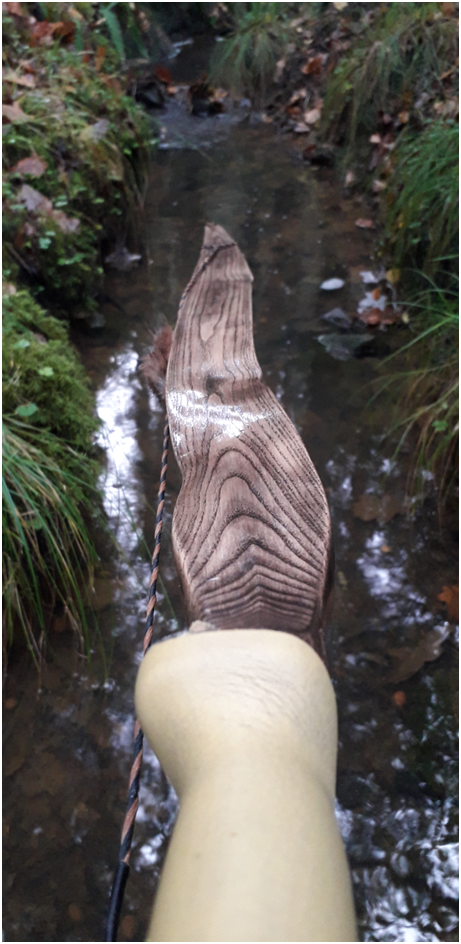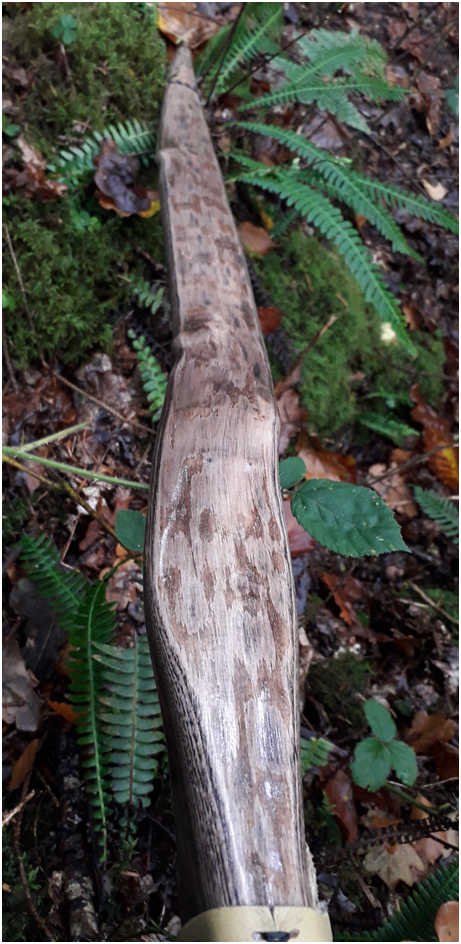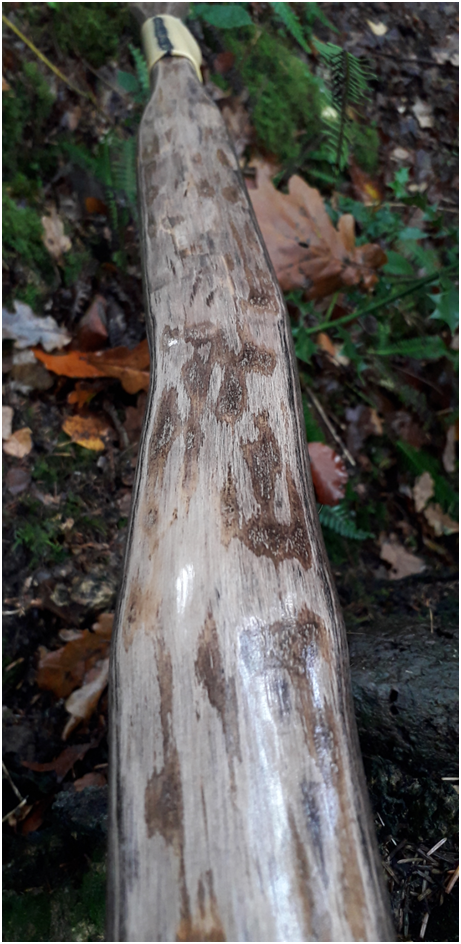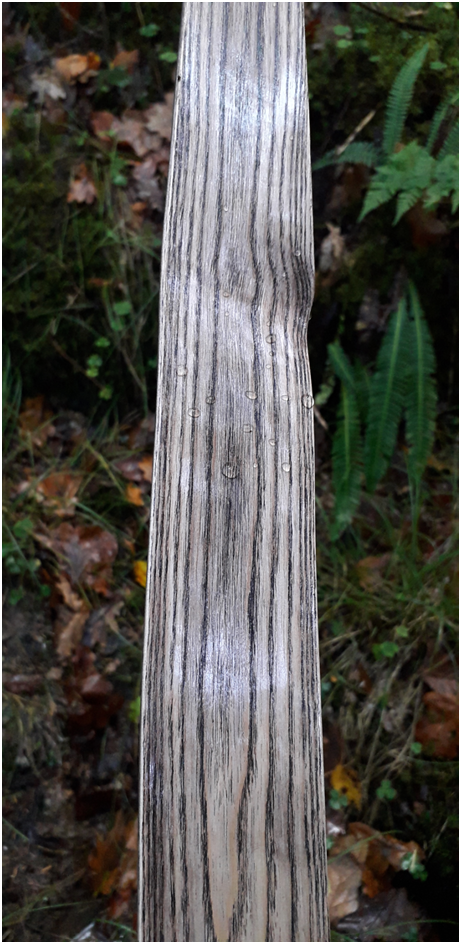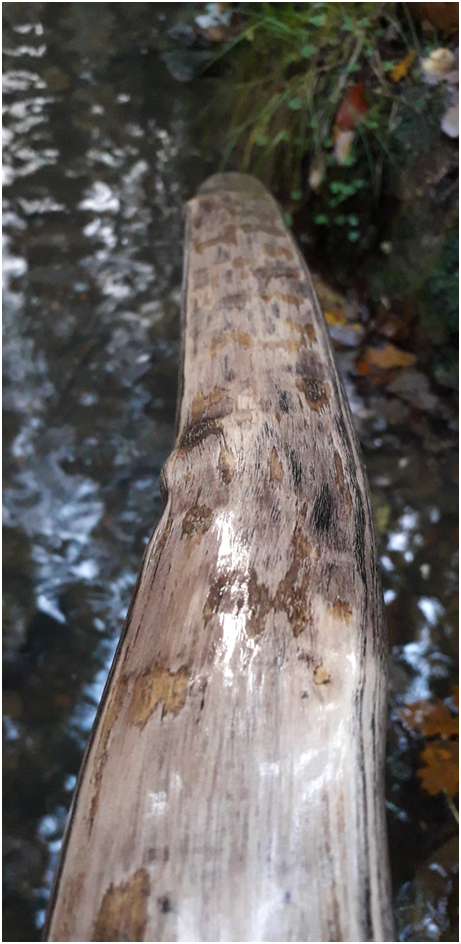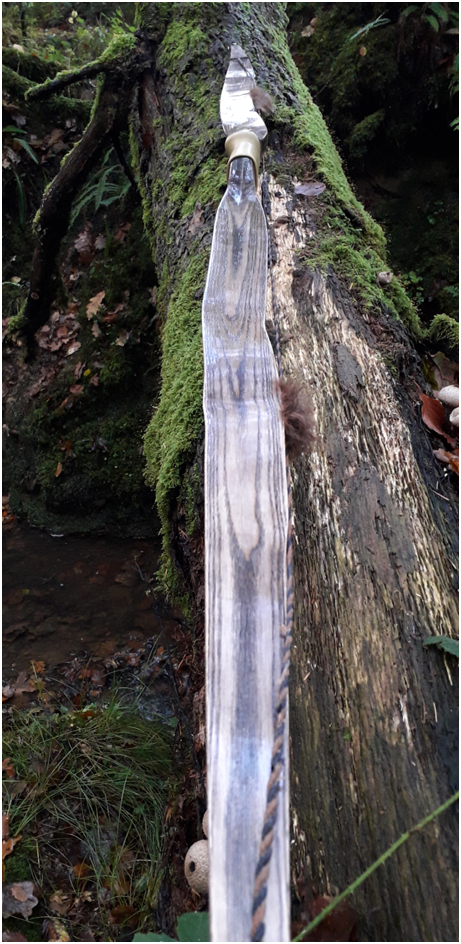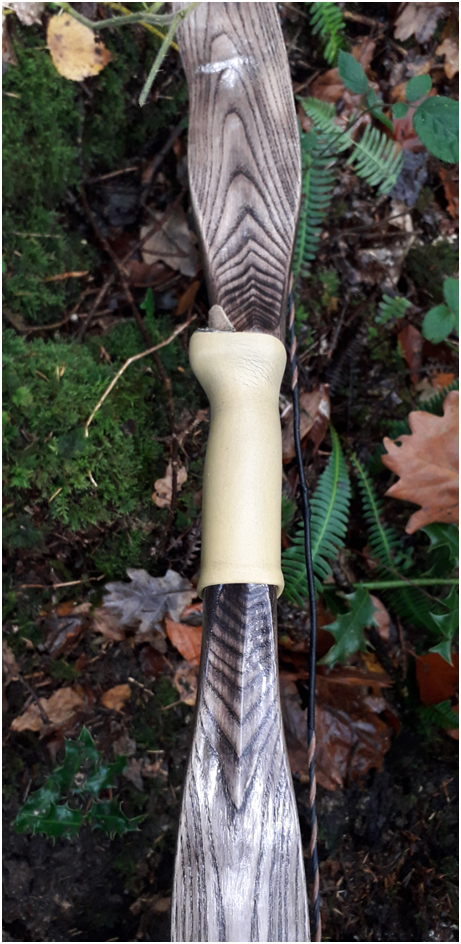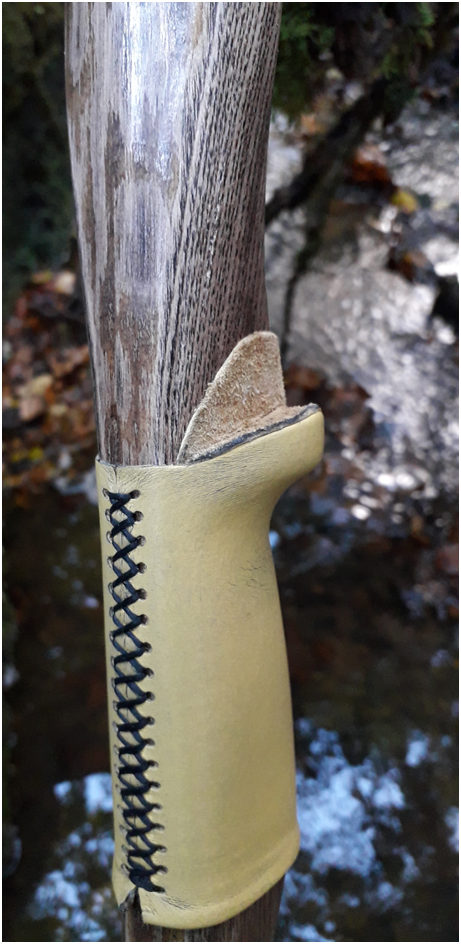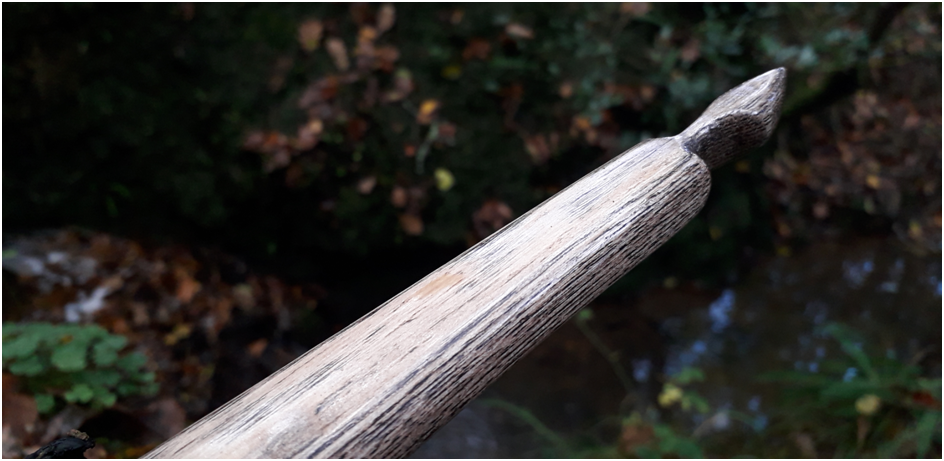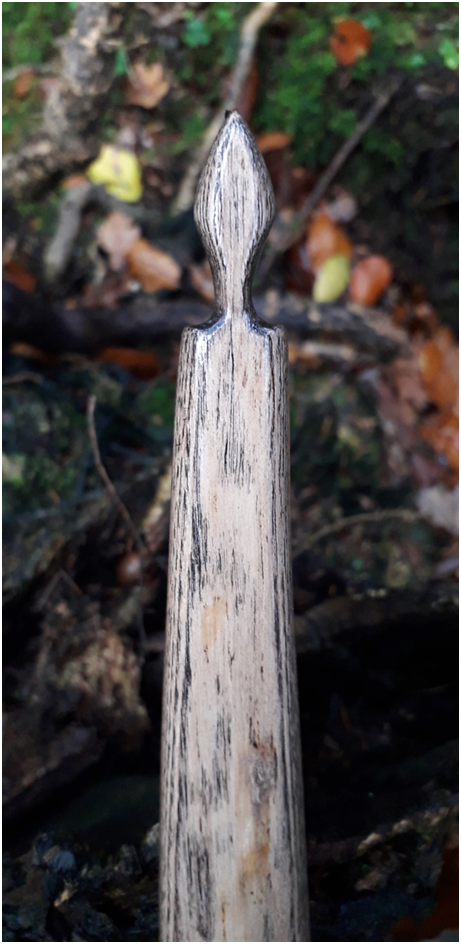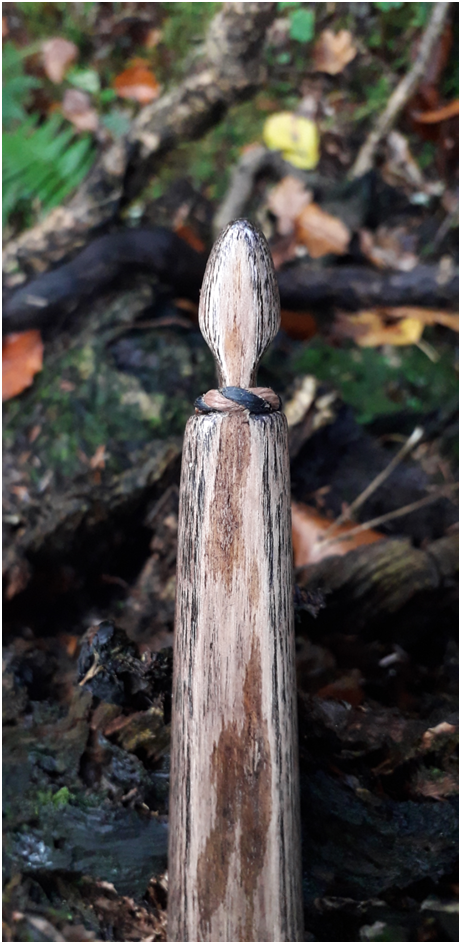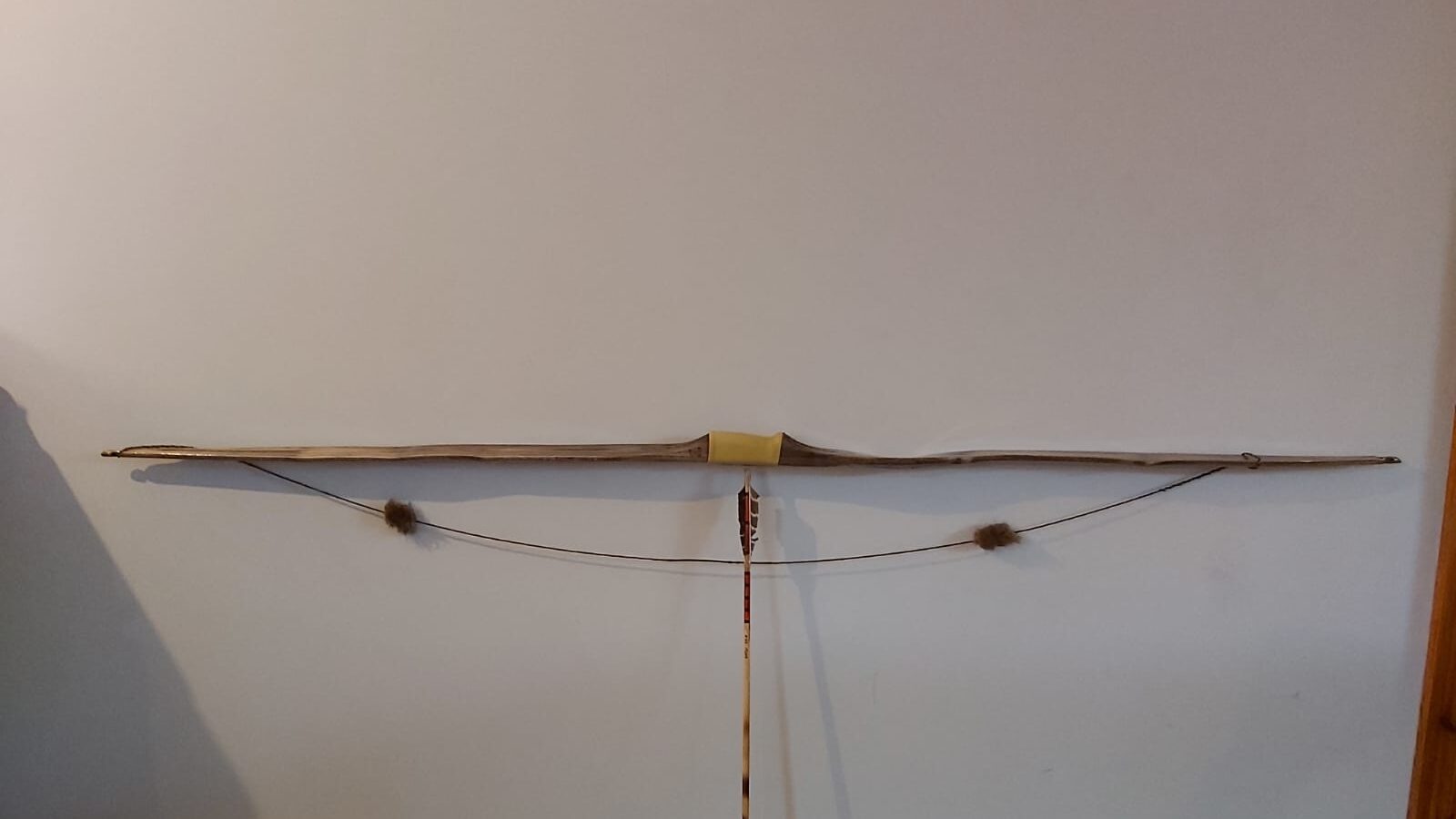I built this bow about this time last year after coming across a knarley 2 1/2″ thick yew branch which had been kicking around in my yew stash for a few years. It was one of those branch wood staves which no conventional bowyer would have used for anything other than firewood. And I must admit, I nearly added it to my own firewood stack!
The branch was relatively straight across the cleanest face but had several bumps, knots and wiggles distributed between 8 sections of reflex and 7 sections of opposing deflex. The sap wood to heartwood ratio was about 2-1 with sapwood clearly forming the majority of the branches volume.
I decided to give it a chop about with the axe to see what the belly would look like with most of the waste wood chopped away. To be honest, it looked like it might just about make a bow.
My main concern was that the pith centre looked like it might not come out without reducing the thickness to a point where the bow would end up very light. But after long string tillering it looked like the limb thickness would be clear of the pith whilst leaving behind enough wood to make a light to moderate weight bow. But the pith would run through the handle along with a drying check which looked unsightly.
My original plan was to produce a stiff handled flat bow with a high crowned D section cross section. But I just couldn’t put up with leaving that horrible crack running right along the length of the handle and fades. So I decided to gouge all that split wood out from the handle and the fades leaving me with just enough wood to function as a handle albeit a bendy character handle!
I made the limbs symmetrical and a max width of 1″ 5/8ths. Tiller was 1/4″ positive. Fades about 2″. Antler tip overlays were fitted after sinew backing so that the overlays could sit on top of the sinew. Nock to nock the finished bow measures 64″.
The single layer of deer leg sinew backing was a hedge against the knots but in hind sight was completely unnecessary. That said the sinew has kept the set to absolute zero. In fact before I sinew backed the bow I tillered it as a self bow to 28″ and was content with the 44lbs draw weight and the 1″ of permanent set after shooting in over a hundred arrows.
But I had a small pile of sinew to do something with so decided to stick it on the back of this bow to see what effect it would have on such an undulating and knarly high crowned back. The results were better than expected!
After sticking 2oz of sinew on with sinew glue the bow was wrapped up and shelved until Nov 2022 so it had about 10 months of curing time. During this time the bow had straightened out and the permanent set had disappeared and didn’t reappear even after retillering and significant shooting in. The weight had jumped up too so I ended up with 50lbs at 28″ with no set at all.
With no skins to cover up the sinew I decided to just leave it bare. I gave the whole back a coat of Titebond III to help smooth down the rough sinew before finishing the whole bow with Trueoil. I refrained from wrapping the handle so that the gouged out handle could feature as part of the overall character of the bow.
An attractive knot is in just the right spot to function as an arrow pass so I didn’t bother with an inlay. The final look is certainly rustic but to be honest, I quite like it!
The handle contours naturally in such a way that the crook acts as a locator dish which feels quite comfortable in the hand, even with the handle bending upon drawing. That said, unless I hold this bow lightly I do notice a bit of hand shock. I think that this is down to the mass of the tips which is probably not helped by the presence of the sinew. In fact, this bow is a little bit on the heavy side thanks to the backing. The total weight of this bow is 760grams! Yikes!
I actually like shooting this bow and it gets quite a bit of attention from others who often see it and comment with questions like “What the heck is that!?” Once they’ve shot it though they usually ask if I can make one for them!
Anyway, here are the pics. Hope you like!
